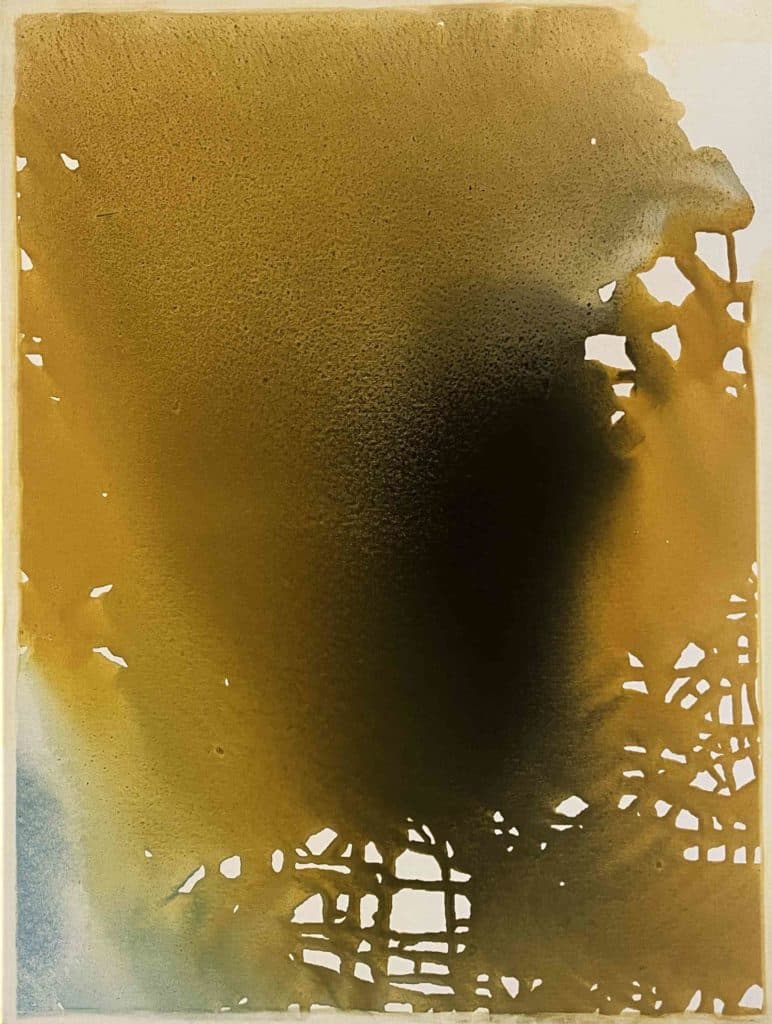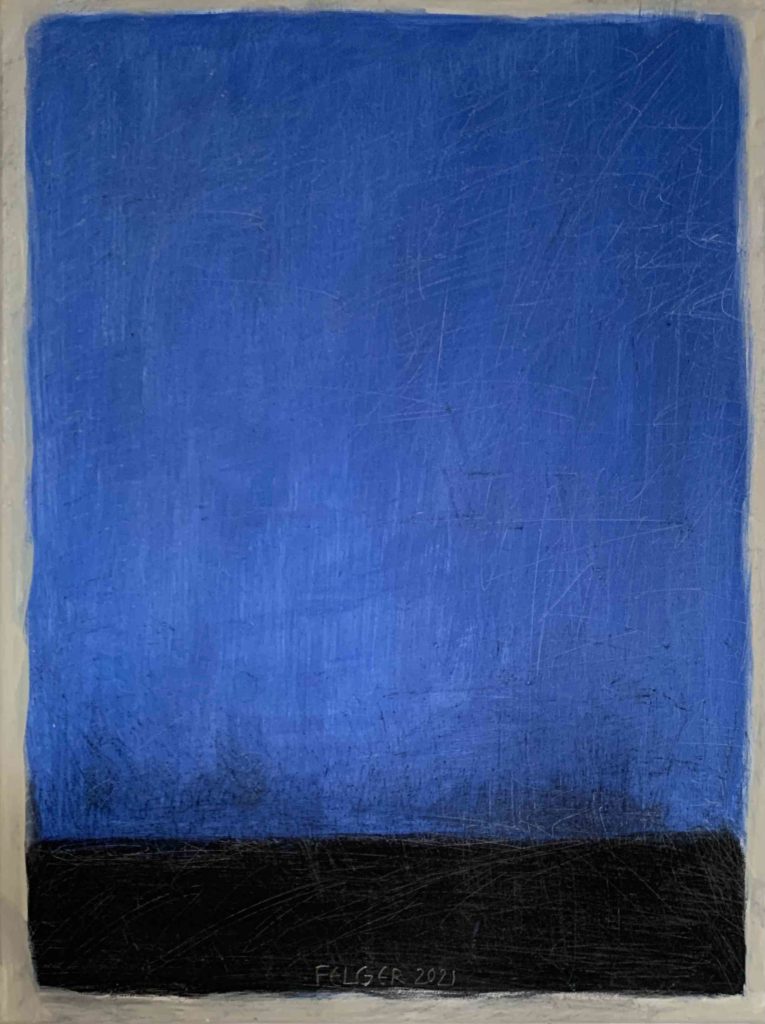UNTITLED
2022
OIL ON CANVAS
80 X 60 CM
If we look at an overview of Andreas Felger’s oil paintings from the year 2022, two groups of works become recognisable that stand relatively coherently on their own: The paintings with reference to Russia’s war against Ukraine (four examples can be found in our online exhibition Pictures of pain and the works that I would like to provisionally call Fließ-Bilder (Flow Paintings) here, because the artist produced them by letting the oil paint flow over the canvases in a highly diluted form. From this group of abstract paintings (more will be shown in the online exhibition Leap in time gezeigt) I present one.
We can immerse ourselves in the surface of colours, which even in a fixed state make their liquid consistency visible, while looking at them, scanning the finest nuances with our eyes and observing the structures as if they were traces in the sand … No search for meaning will guide us, we can abandon ourselves entirely to the charms of the material (and thereby also understand the curiosity and pleasure with which Felger produced them): deliquescent, in waves, washed away in delicate transitions of light and dark, starting from a dark amorphous form that blossoms out, with light inclusions like stones that protrude a little, with irregularly gridded struts that are softly contoured in places, two-dimensional, grainy, holey and contrasted on the lower left by a small section of bluish colour that corresponds with the canvas colour on the upper right.
The guided but (in contrast to the brushstroke) not entirely controlled flow of paint, which is co-determined by the fine unevenness of the material, gives the impression of freedom (of artistic intentions). As with dripping, gravity has also played a part here. But the freedom has limits, towards the outside the colour is straightened, as if in an invisible framing, with only slightly irregular edges. In this way, the flowing forms appear bordered and, in contrast, the transgression of form appears even more intense. Condensation and opening, gentle transitions and burr-like lines that appear holey and somewhat bizarre – with a light hand Andreas Felger has united opposites on one surface and stopped the process before the colours would become cloudy through overlapping or blurring.
Finally, a comparative example of the same format from the previous year: here, too, we find contrasts of light and dark, a border that emphasises the centre of the picture, broad areas of colour and the finest of lines. Even if the ‘flow pictures’ seem unusual in Felger’s work and the rectangular shapes, brush marks and incisions visualise the artist’s craft as we know it, there are common features that testify to the belonging together of the works.
Text by Marvin Altner


